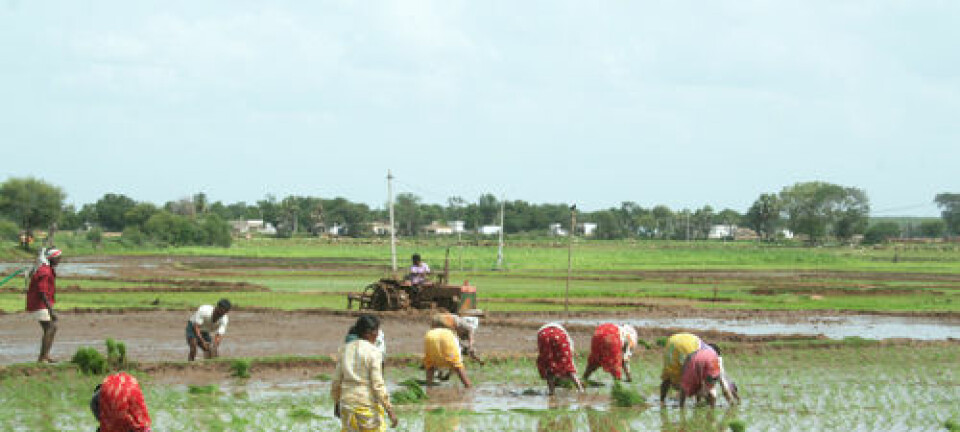
Spring is arriving earlier
Around the globe, leaves are popping and fruit trees are blooming earlier than before. Norwegian records show that the temperature in mid-May is about one degree higher today than it was 40 years ago.
Denne artikkelen er over ti år gammel og kan inneholde utdatert informasjon.
Anne Kjersti Bakken, who works at the phenological garden in Kvithamar near Trondheim, says that birch trees are tending to leaf out earlier than before.
“We have leaf-out figures from 1964 to the present. We aren’t seeing any major variations — for example, in 1964 leaf-out occurred on 7 May, and this year we recorded the same event on 11 May. But if we look at the figures in their entirety, we can see a trend toward ever earlier leafing out,” she says.
The records from the Oslo observation site of the Norwegian Meteorological Institute show that in May 1975, the average temperature in the country was 11.3 degrees compared to 12 degrees last year.
Earlier spring across the north
Springtime temperatures in Norway have risen by 1 to 1.5 degrees since the 1970s. The meteorological definition of spring is when the temperature stays above freezing for all 24 hours, or both day and night.
“The figures we have are clearly telling us that spring is coming earlier. How many days or weeks earlier is hard to say, but there’s no doubt that winter is being gobbled up at both ends,” said Hans Olav Hygen of the Norwegian Meteorological Institute.
Spring has also been in a hurry throughout Sweden this year. The annual "Vårkollen" project relies on people across the country who report early signs of spring to the Swedish Botanical Society. This year Swedes reported about 4,000 sightings of coltsfoot, hepatica, anemones, birch trees and cherry trees in flower on 30 April and 1 May.
Similar observations were conducted in Sweden in the late 1800s and early 1900s, enabling a comparison with current data. Using spring leaf-out as the basis for comparison, spring has moved 700-800 kilometres north as compared to 100 years ago.
Longer growing season
Melt-out — the date when the snow is gone in spring — has been recorded since 1960 at the Kise observation site in Norway’s Hedmark County. Researcher Hugh Riley says that melt-out is now occurring about one month earlier than in 1960, and the biggest change has happened since 1988.
Senior Researcher Mekjell Meland at the Norwegian Institute for Agricultural and Environmental Research (Bioforsk), has tracked fruit trees for 25 years in Ullensvang in the Hardanger region, and confirms that the trees are blooming earlier than before.
“When I was a boy, which is a few years ago, the rule of thumb was that the cherry trees would bloom for 17 May, Norwegian Constitution Day, and the apple blossoms came a week later. This year we noticed that the apple trees blossomed on 11 May, and the cherry blossoms came the day after,” says the 62-year-old Meland.
He adds that last year’s flowering in Hardanger came late, but the trend in recent years has been a longer growing season — for better or for worse.
Worldwide warming
Hygen at the Meteorological Institute says that the early spring is a result of global warming.
He worries about this trend and says, “Looking at the data from decade to decade, we’ve noted a marked change. It’s man-made warming, and radical steps are needed for this to stop.”
“In the long run, the whole world will be warmer. Norway itself may not see the major negative consequences, but we’ll notice the effects in heavier precipitation and worse skiing conditions. Some parts of the world will become uninhabitable,” he says.
---------------------------------------
Read the Norwegian version of this article at forskning.no
Translated by: Nancy Bazilchuk



































